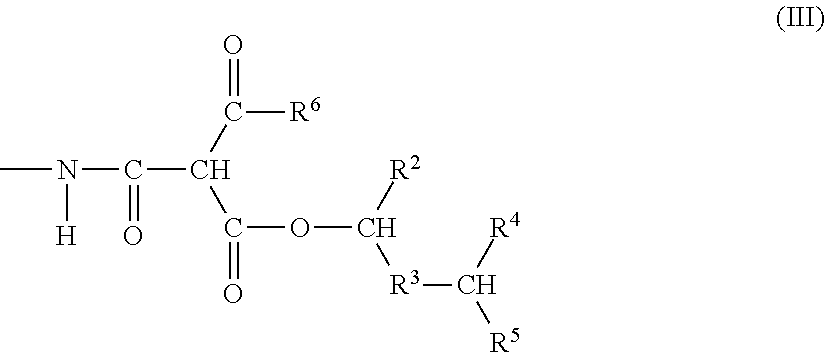Aqueous paint composition and method for forming coating
a coating composition and composition technology, applied in the field of forming coating films, can solve the problems of insufficient insufficient smoothness and water resistance of insufficient adhesion and chipping resistance of multi-layer coating films obtained by this coating method, etc., to achieve enhanced coating film properties (flexibility), excellent smoothness, and high chipping resistance
- Summary
- Abstract
- Description
- Claims
- Application Information
AI Technical Summary
Benefits of technology
Problems solved by technology
Method used
Image
Examples
production example 1
[0388]174 parts of trimethylolpropane, 327 parts of neopentyl glycol, 352 parts of adipic acid, 109 parts of isophthalic acid, and 101 parts of 1,2-cyclohexanedicarboxylic acid anhydride were placed in a reactor equipped with a thermometer, a thermostat, a stirrer, a reflux condenser, and a water separator, and the mixture was heated from 160° C. to 230° C. over 3 hours. While the resulting condensation water was distilled off via the water separator and the temperature was maintained at 230° C., a reaction was allowed to proceed until an acid value of 3 mg KOH / g or less was achieved. 59 parts of trimellitic anhydride was added to the reaction product, and an addition reaction was conducted at 170° C. for 30 minutes. The resulting product was cooled to 50° C. or lower, and neutralized by adding one equivalent of 2-(dimethylamino)ethanol relative to the acid group. Subsequently, deionized water was gradually added to provide a hydroxy-containing polyester resin solution (A1-1) having...
production example 2
[0389]168 parts of trimethylolpropane, 316 parts of neopentyl glycol, 93 parts of adipic acid, 211 parts of isophthalic acid, 188 parts of phthalic anhydride, and 65 parts of 1,2-cyclohexanedicarboxylic acid anhydride were placed in a reactor equipped with a thermometer, a thermostat, a stirrer, a reflux condenser, and a water separator, and the mixture was heated from 160° C. to 230° C. over 3 hours. While the resulting condensation water is distilled off via the water separator and the temperature was maintained at 230° C., a reaction was allowed to proceed until an acid value of 3 mg KOH / g or less was achieved. 59 parts of trimellitic anhydride was added to the reaction product, and an addition reaction was conducted at 170° C. for 30 minutes. The resulting product was cooled to 50° C. or lower and neutralized by adding one equivalent of 2-(dimethylamino)ethanol relative to the acid group. Subsequently, deionized water was gradually added to provide a hydroxy-containing polyester...
production example 3
[0390]166 parts of trimethylolpropane, 314 parts of neopentyl glycol, 338 parts of adipic acid, and 194 parts of 1,2-cyclohexanedicarboxylic acid anhydride were placed in a reactor equipped with a thermometer, a thermostat, a stirrer, a reflux condenser, and a water separator, and the mixture was heated from 160° C. to 230° C. over 3 hours. While the resulting condensation water was distilled off via the water separator and the temperature was maintained at 230° C., a reaction was allowed to proceed until an acid value of 3 mg KOH / g or less was achieved. 94 parts of 1,2-cyclohexanedicarboxylic acid anhydride was added to the reaction product, and an addition reaction was conducted at 170° C. for 30 minutes. The resulting product was cooled to 50° C. or lower and neutralized by adding one equivalent of 2-(dimethylamino) ethanol relative to the acid group. Subsequently, deionized water was gradually added to provide a hydroxy-containing polyester resin solution (A1-3) having a solids ...
PUM
 Login to View More
Login to View More Abstract
Description
Claims
Application Information
 Login to View More
Login to View More - R&D
- Intellectual Property
- Life Sciences
- Materials
- Tech Scout
- Unparalleled Data Quality
- Higher Quality Content
- 60% Fewer Hallucinations
Browse by: Latest US Patents, China's latest patents, Technical Efficacy Thesaurus, Application Domain, Technology Topic, Popular Technical Reports.
© 2025 PatSnap. All rights reserved.Legal|Privacy policy|Modern Slavery Act Transparency Statement|Sitemap|About US| Contact US: help@patsnap.com



